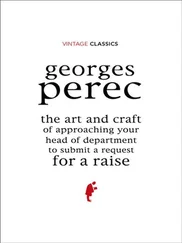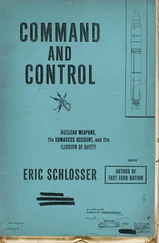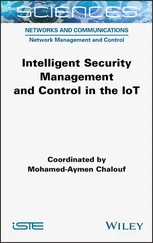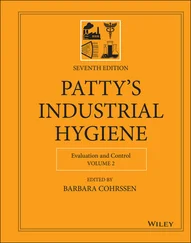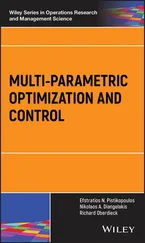The main goal of the book is to cover the field of automatic process control and instrumentation for plastics processing and also the new topics of statistical process control and process monitoring, which are required to document good manufacturing practices.
The text focuses on the literature of the past decade. Beyond education, this book will serve the needs of industry engineers and specialists who have only a passing knowledge of the plastics and composites industries but need to know more.
Utmost care has been taken to present reliable data. Because of the vast variety of material presented here, however, the text cannot be complete in all aspects, and it is recommended that the reader study the original literature for more complete information.
The reader should be aware that mostly US patents have been cited where available, but not the corresponding equivalent patents in other countries. For this reason, the author cannot assume responsibility for the completeness, validity or consequences of the use of the material presented herein. Every attempt has been made to identify trademarks; however, there were some that the author was unable to locate.
There are three indices: an index of acronyms, an index of chemicals, and a general index. In the index of chemicals, compounds that occur extensively, e.g., “acetone,” are not included at every occurrence, but rather when they appear in an important context.
I am indebted to our university librarians, Dr. Christian Hasenhüttl, Margit Keshmiri, Friedrich Scheer, Christian Slamenik, Renate Tschabuschnig, and Elisabeth Groß for support in literature acquisition. I also want to express my gratitude to all the scientists who have carefully published their results concerning the topics dealt with herein. This book could not have been otherwise compiled.
Last, but not least, I want to thank the publisher, Martin Scrivener, for his abiding interest and help in the preparation of the text. In addition, my thanks go to Jean Markovic, who made the final copyedit with utmost care.
Johannes Fink
Leoben, 10th November 2020
1
General Aspects
1.1 Subjects of the Book
This book introduces the subject of process analysis, instrumentation and control for modern manufacturing in the plastics industry. Process analysis is the starting point since plastics processing is different from processing of metals, ceramics, and other materials. Plastics materials show an unique behavior in terms of heat transfer, fluid flow, viscoelastic behavior, and a dependence on the previous time, temperature and shear history which determines how the material responds during processing and its end use.
Many of the manufacturing processes are continuous or cyclical in nature. The systems are flow systems in which the process variables, such as time, temperature, position, melt and hydraulic pressure, must be controlled to achieve a satisfactory product, which is typically specified by critical dimensions and physical properties which vary with the processing conditions. Instrumentation has to be selected so that it survives the harsh manufacturing environment of high pressures, temperatures and shear rates and yet it has to have a fast response to measure the process dynamics. Many times the measurements have to be in a non-contact mode so as not to disturb the melt or the finished product. Plastics resins are reactive systems. The resins will degrade if the process conditions are not controlled. Analysis of the process allows one to strategize how to minimize degradation and optimize end use properties.
Linear systems in which there exists a one-to-one relationship between the input variable and the output response are the easiest to analyze and control. Plastics on the other hand show a nonlinear dependence on part/product cooling which varies with the square of the part thickness, laminar flow which varies with the cube of the wall thickness and mechanical strength/stiffness which varies with the cube of wall thickness. Also, wall thickness influences the crystallization, shrinkage, morphology and critical dimensions of the product.
In order to make corrections to the process, actuators, also known as final control elements, must introduce energy to the system. This hardware is in the form of servo valves, solenoid valves, servo motors, heaters, and blowers. The sizing, response time, ruggedness and linearity must be considered. All the above hardware has to be assembled into a system and programmed with a suitable algorithm to carry out automatic control. The control configuration and the algorithm are dictated by the system itself. Common control modes are feedback setpoint control which is common in extrusion, servo control which is common in injection molding and blow molding cyclical processes, and combinations and variations thereof.
A simplified, practical, and innovative approach to understand the design and manufacture of plastic products in the World of Plastics has been presented (1).
The information defines and focuses on past, current, and future technical trends. This handbook reviews more than 20,000 different subjects.
Various plastic materials and their behavior patterns were reviewed. Examples are provided of different plastic products and critical factors relating to them that range from meeting performance requirements in different environments to reducing costs and targeting for zero defects (1).
1.3 Injection Molding
1.3.1 Cost Estimation in Injection Molding
Cost and performance estimation are frequently used at the early stages of product development to determine the feasibility and drive critical design decisions. Early cost estimation has been hampered by the unavailability and uncertainty of information.
Here, cost estimates were derived from a complexity metric as defined by the number of dimensions that uniquely define the part geometry (2).
The cost drivers of manufacturing an injection molded plastic part Cpart are expressed in Eq. 1.1.
[1.1] 
The material cost contribution, Cmat, is very significant, typically 50% to 80% of the total part cost. Tooling and processing costs are also significant cost drivers. The processing cost, Cproc, is dependent on the hourly rate charged for the usage of the injection molding machine as well as the processing yield, yproc, which is the ratio of good parts to the total number of parts produced. The tooling cost, Ctool, is amortized over the estimated production quantity N for the life of the tool.
Eq. 1.2is an expression for the assembled product cost.
[1.2] 
The m parts that constitute the product include both injection molded and standard purchased parts. The cost of the assembly is the product of the assembly shop hourly rate, Rassy, and the total time required to assemble the m parts constituting the product. Thus, the assembly cost decreases as part-count m decreases. The overhead cost per product COH includes both the shop and the administrative overheads.
Dimensionality and other critical design variables can be automatically assessed within modern computer-aided design systems throughout the product development process to provide continual feedback regarding tooling, process, and material costs (2).
Читать дальше



